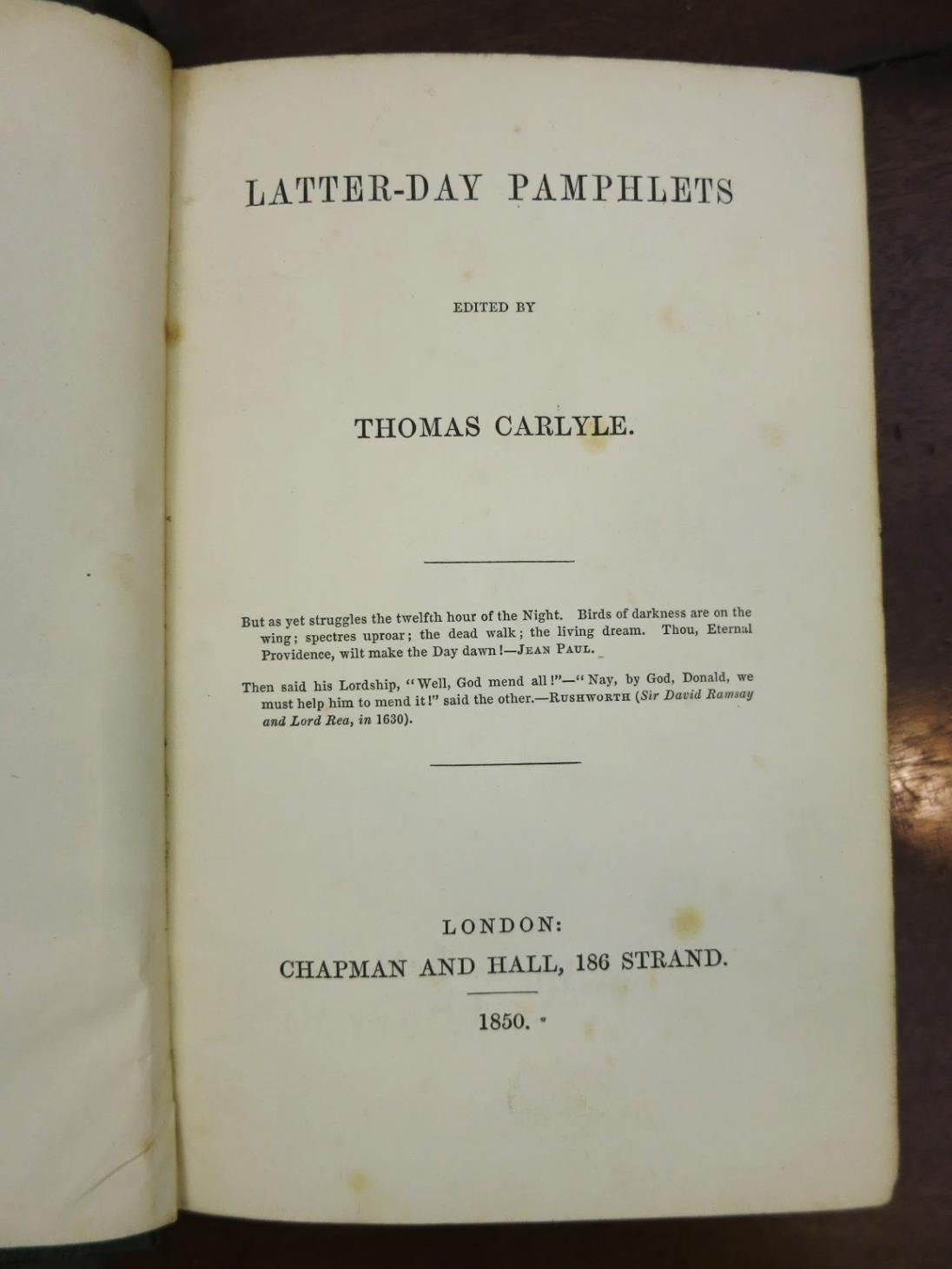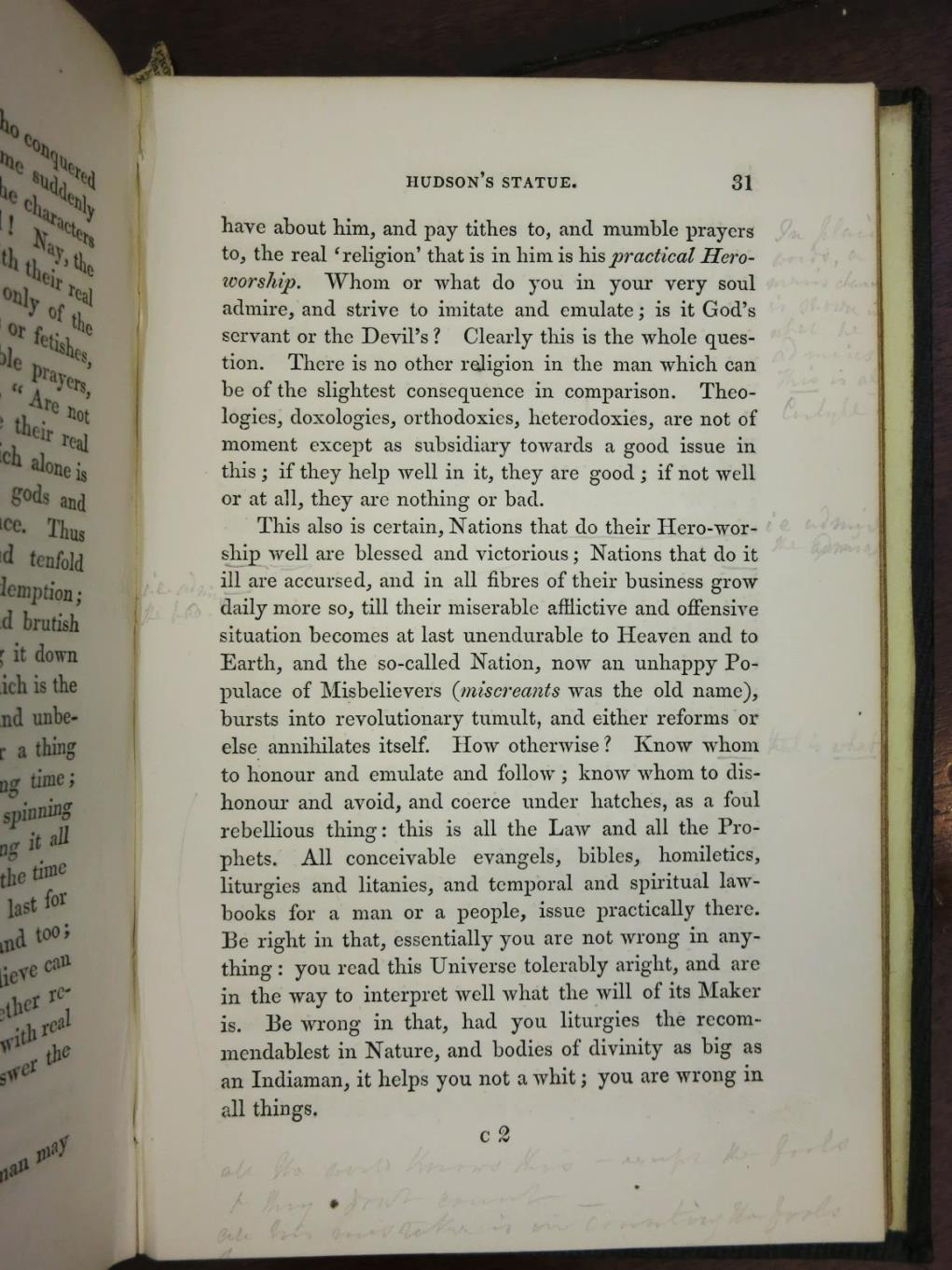Provided an opportunity to reflect on the productively fractious nexus of technological change, unregulated investment, philosophical idealism, and logical empiricism that characterized the original age of steam, in both its literal and its institutional-intellectual sense, Albert presented “Measuring Hot Air in the Age of Steam: Mill on Carlyle on Hudson” at the 2016 meeting of the Victorians Institute, hosted by North Carolina State University in Raleigh. Building upon one of the rare pieces of published scholarship about the Mill Collection, Edward Alexander’s “Mill’s Marginal Notes on Carlyle’s ‘Hudson’s Statue’,” English Language Notes 7 (1969): 120-23, he focused on the recurrent concern evinced by Mill’s marginal marks and annotations about what he saw as Carlyle’s misplaced anxiety over the statue-building predilections of “fools” who should not “count.”

At the core of Mill’s critical response to his former friend is the very crowded p. 31 of Hudson’s Statue:

This page, which contains four separate pairs of marks and annotations, goes unmentioned in Alexander’s original essay, which is unfortunate since in its bottom margin is Mill’s most pointed objection: “all the world knows this – except the fools + they don’t count – all his mistake is in counting the fools.” There is a tantalizing upstroke at the bottom of the page, indicating that Mill might have somehow qualified his supremely confident, even illiberal, judgment; but a subsequent rebinding has literally lost this handwritten paratext on the cutting room floor.
We are left, then, with the context provided by Mill’s two further fool-related annotations, which appear on pages 26 and 29, respectively. In both places—the first a sympathetic acknowledgment of Carlyle’s personal experience of being judged “a kind of interloper and dissocial person” and the second an impatient dismissal of Carlyle’s interrogation of the fictional Fitzsmithytrough—Mill reiterates the position articulated earlier, in his public and private responses to the second volume of Alexis de Tocqueville’s Democracy in America, about the imperative to secure the rights of the (intellectual) minority within a democratic society. In other words, making sure that those who “count” can be heard over the speech of “fools.”
The problem for Carlyle, as Mill sees it at least, is that his legitimate claim to belong to this minority—as evidenced by his first-hand knowledge of being found out as someone “who obstructs the harmony of affairs” (26)—is continuously undermined by his appeals to fools, whether those actually planning to erect a statue of George Hudson, or those fictionally grinning “as an ape would” at Carlyle’s rhetorical questions about “Immensity” (29). In excoriating the idea of memorializing the “Railway King,” Carlyle, Mill judges, runs the risk of himself appearing to be full of steam, which is by definition merely hot air that’s all wet.
– Albert D. Pionke, Project Director